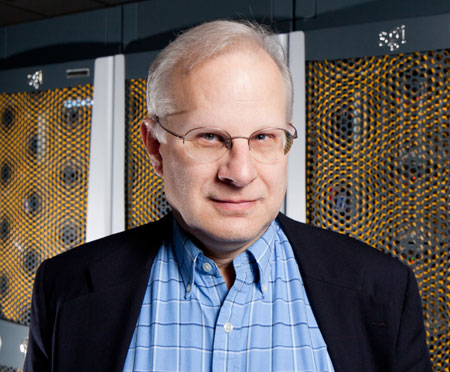Breaking Down Clouds and Convection with Leo Donner
When asked which instrument would most improve numerical modeling, Leo Donner can’t settle on just one. The GFDL physical scientist says it would take more than a single tool to advance his clouds and convection research, even without cost constraints.
As an indispensable scientist to the GFDL team since 1991, Donner spends his work days using climate models to help fellow scientists and society at large understand climate and climate change, giving specific attention to clouds and convection.
Understanding how atmospheric processes and their various scales interact with one another is integral, the numerical modeler says, to evaluating the role clouds play in the climate system. Without the numerical models he and his colleagues have developed, interpreting observations of climate change and understanding the consequences of altering the composition of the atmosphere would not be possible.
In the following interview, Donner explains why clouds and convection are sometimes wildcards in climate modeling and how improving their representation in models would benefit our understanding of climate and climate change.
Why does your research matter?
Understanding climate and climate change have become central questions, not only for scientists, but for society at large. Climate models are essential in answering these questions. Without them, interpreting observations of climate change and understanding the consequences of altering the composition of the atmosphere would be impossible. Clouds and convection are major uncertainties in climate models. Research toward improving the modeling of clouds and convection in the climate system aims to provide a stronger scientific basis for public policy on climate, as well as fundamental understanding of the atmosphere.
What do you enjoy the most about your work?
To understand clouds in the climate system requires understanding how atmospheric processes whose scales span many orders of magnitude interact with one another. The work is very interdisciplinary in character and demands new ways of looking at the sub-fields of meteorology. There is a great challenge in bringing to bear observations from laboratories, field programs, and satellites to develop and evaluate models.
Where do you do most of your work? In a lab? In field studies?
I do most of my work with numerical models. Increasingly, I am interacting with colleagues who engage in field and satellite studies as I work to evaluate these models and increase their realism.
What in your lab could you not live without?
Certainly, powerful computers are essential. The valued colleagues with whom I work are also absolutely necessary.

If you could invent any instrument to advance your research and cost were no object, what would it be? Why?
One instrument alone probably would not do it, but as a numerical modeler it’s hard not to say that a computer allowing me to resolve scales down to those controlling the formation of clouds in a global model would be truly wonderful. Even then, I would hope my satellite and experimental colleagues would be inventing comparably advanced instruments with which to evaluate the models I would run on that computer.
When did you know you wanted to pursue science?
Probably during upper elementary school, perhaps around 5th grade. Science projects in chemistry and meteorology were especially interesting to me at that time. Pursuing science as a realistic choice, though, resulted from ongoing positive educational and, later, research experiences through high school and beyond.
What’s at the top of your recommended reading list for someone wanting to explore a career in science?
James Watson’s “The Double Helix’ conveys the milieu of scientific discovery with a sharp point of view. Reading it the summer after my first year in college totally animated the chemistry and physics I’d been studying the prior year.
And how about a personal favorite book?
Singling out one favorite is tough, but memorable, especially in the context of these questions are Walter Isaacson’s biography “Benjamin Franklin” and Tom Stoppard’s “Arcadia.” Isaacson builds an insightful and lively portrait of a great citizen and scientist. Stoppard’s “Arcadia,” actually a play, is a delightful tale of science among the academic pursuits, with plenty a cautionary note, to greatly humorous effect, about its limits and the foibles of its practitioners.
What part of your job as a NOAA scientist did you least expect to be doing?
Collaborations outside NOAA and outside my own field have been enormously beneficial and important. I would not have expected these to be as extensive as they have become. I’ve enjoyed these collaborations enormously, well beyond just the science involved.
Do you have an outside hobby?
I enjoy reading, theater, and music. The performing arts in the region of GFDL, in New York and Philadelphia, are remarkable.
What would you be doing if you had not become a scientist?
I’ve always had an interest in urban planning and the organization of cities. The interface between climate, climate change, and urban meteorology is bringing those topics closer to my scientific research.
Who is your favorite historical scientist and why?
Isaac Newton. His framework of deterministic dynamics, though restricted in its generality by relativity and limited in its predictive power by chaos, provides the fundamental underpinning for the scientific interpretation of the atmosphere and oceans.


